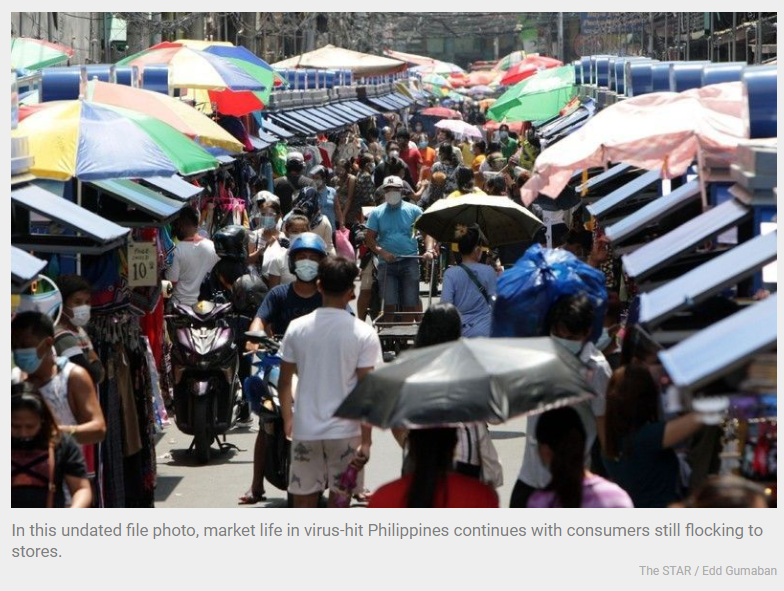Philippines: Inflation nearly breached gov’t target in March as high fuel prices bite
MANILA, Philippines — Consumer prices rose at their briskest pace in six months in March and nearly breached the government’s target, no thanks to unabated rise in fuel prices that forced Filipinos to tighten their belts.
Inflation, as measured by the consumer price index, accelerated 4% year-on-year in March, faster than the 3% clip posted in February, the Philippine Statistics Authority reported Tuesday.
The latest figure, which was the fastest rate since September last year, settled at the upper-limit of the government’s 2-4% target. But it was nevertheless within the Bangko Sentral ng Pilipinas’ 3.3-4.1% forecast range for last month.
In a virtual media briefing, National Statistician Claire Dennis Mapa said the magnitude of increase in headline inflation last month was “quite rare”. He recalled that the last time consumer prices grew by a full percentage point was back in 2019 when they surged to 2.4% in December, from a 1.4% print recorded in the preceding month.
Mapa said much of the upward price pressures in March came from costly fuel, which set off an increase in prices of other key consumer items. Energy department data showed oil companies implemented four price adjustments in March, three of which were massive hikes due to rallying world oil prices amid the Russia-Ukraine war.
Broken down, transport inflation rose 10.3% year-on-year in March, with prices of gasoline and diesel growing at annual rates of 36.7% and 58.0%, respectively.
The expensive fuel, Mapa explained, had a “quite substantial” impact on food prices, which jumped 2.6% year-on-year last month. The higher cost of transporting food only exacerbated already elevated prices due to tight supply particularly of pork, which recorded an inflation rate of 2.9% as the country struggles to contain the deadly African swine fever outbreak.
The higher oil prices also spilled over to utilities. PSA data showed costs of housing, water, electricity, gas and other fuels jumped 6.2% on-year in March.
In a statement, BSP Governor Benjamin Diokno conceded that the central bank could miss its inflation target again this year because of motoring oil prices. In the first three months of 2022, inflation averaged 3.4%.
So far, the BSP has refused to join a global tightening of monetary policy, believing that sustaining economic recovery from the pandemic should take precedence over taming inflation for now.
Diokno said the BSP is counting on the government to temper inflation and ease its impact on Filipinos through “direct non-monetary measures” like cash aid and importation. But a large budget deficit has handicapped the Duterte administration fiscally, with economic managers admitting that the size of state assistance might not bring enough relief to people.
“Previous episodes of supply-side shocks in the country have shown that these are best addressed through timely non-monetary policy interventions that could ease directly domestic supply constraints and prevent second- round effects on prices,” the BSP chief added.
Moving forward, Nicholas Mapa, senior economist at ING Bank in Manila, said consumer price increases have become more pervasive these days.
“Despite the inflation spike being cost-push, we are now seeing price increases being more pervasive and affection more items in the CPI basket. Elevated prices will work to de-anchor inflation expectations leading to second-round effects,” he said in a Viber message.
“The data-driven central bank will likely look at this data stream on top of robust GDP growth and should factor this in its upcoming policy decisions,” he added.
Source: https://www.philstar.com/business/2022/04/05/2172417/inflation-nearly-breached-govt-target-march-high-fuel-prices-bite


 English
English




